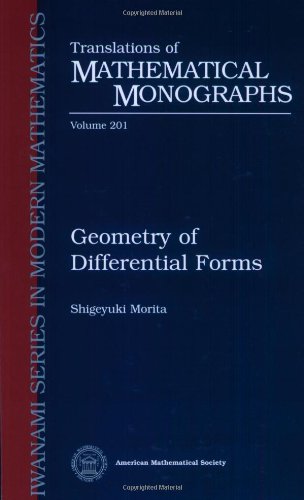Geometry of Differential Forms book
Par bailey james le mardi, août 16 2016, 00:35 - Lien permanent
Geometry of Differential Forms. Shigeyuki Morita

Geometry.of.Differential.Forms.pdf
ISBN: 0821810456,9780821810453 | 171 pages | 5 Mb

Geometry of Differential Forms Shigeyuki Morita
Publisher: American Mathematical Society
The set of all differential k-forms on a manifold M is a vector space,. The naive view of a tangent will have it "sticking out" into some surrounding (one says embedding) space, and this we cannot allow - we want to do intrinsic geometry. Differential geometry is obsolete. I came across a beautiful pedagogical approach to E&M recently, which is clearly explained in the article Teaching Electromagnetic Field Theory Using Differential Forms by Warnick, Selfridge, and Arnold. (including the generalized Stokes’s theorem). An application of differential forms for the study of some local and global aspects of the differential geometry of surfaces. Create a book; differential geometry - Different ways of treating vector calculus. The book treats differential forms and uses them to study some local and global aspects of the differential geometry of surfaces. Link back to: arXiv, form interface, contact. Differential forms are introduced in a simple way that will make them attractive to “users” of mathematics. In addition, classical differential geometry lacks the techniques that are widely applied in theoretical physics, such as differential forms. Title: The Geometry of Differential Privacy: the Sparse and Approximate Cases For pure differential privacy, an $O(\log^2 d)$ approximation to the optimal mechanism is known. We are going to call this a "differential 1-form", but we would do well to notice the things that our text is not telling us - first that this construction implies we are working over a 3-manifold (Euclidean flat, sure enough), and moreover that is a vector in the co-tangent space to this manifold.